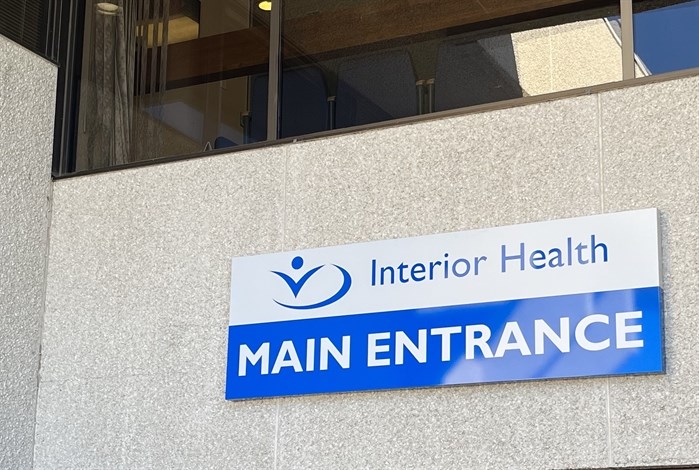I stepped into the Kelowna General Hospital’s waiting room on a rainy Tuesday morning. The fluorescent lights cast a harsh glow over the faces of those waiting—some scrolling phones, others staring blankly ahead. A middle-aged woman in a purple sweater caught my eye. She’d been there since 5 a.m., hoping to secure an appointment with a specialist for her elderly father.
“He’s been on three different waitlists for eight months,” she confided, asking to remain anonymous. “I worry every day that his condition will worsen before we can get proper care.”
Her fears aren’t unfounded. Last year, approximately 1,600 patients died while waiting for procedures within Interior Health’s jurisdiction—a figure that marks the highest recorded waitlist deaths in the region’s history, according to data obtained through Freedom of Information requests.
The numbers tell a grim story of a healthcare system under unprecedented strain. Internal documents from Interior Health reveal that waitlist deaths increased by nearly 26% compared to 2021 figures, with patients waiting for critical cardiac procedures, cancer treatments, and joint replacements among those most affected.
Dr. Hannah Weiss, a healthcare policy researcher at the University of British Columbia, calls the situation “a perfect storm of post-pandemic backlogs, staffing shortages, and infrastructure limitations.”
“What we’re seeing isn’t just statistics—these are people whose quality of life diminished while waiting, whose conditions worsened, and who ultimately ran out of time,” Weiss explained during our conversation at her campus office.
The impacts ripple throughout communities across B.C.’s interior. In Kamloops, local support groups have formed specifically for families navigating waitlists. The “Waiting Together” community meets monthly at the public library, sharing resources and providing emotional support.
“We started with six people in January. Now we regularly see thirty or more,” says organizer Martin Cheung, whose mother died while waiting for a heart valve replacement last summer. “It’s become a lifeline for many, but the fact we need to exist at all speaks volumes about the system’s failures.”
Interior Health officials acknowledge the crisis. In a statement, the health authority expressed “deep concern” over the waitlist figures and pointed to several initiatives designed to address the backlog, including extended operating room hours and the recruitment of additional specialists.
“Every loss represents a person and a family,” the statement reads. “We are committed to implementing sustainable solutions to prevent these tragedies from continuing.”
But healthcare workers on the frontlines describe a different reality. A surgical nurse at Penticton Regional Hospital, speaking on condition of anonymity due to employment concerns, shared her frustration.
“We’ve been running at capacity for years now. Adding extra hours sounds good on paper, but when your staff is already burned out and leaving the profession, it’s like bailing water with a teaspoon.”
The crisis is particularly acute in smaller communities. In Revelstoke, where specialty care often requires travel to larger centers, local physician Dr. Amelia Paulson has witnessed the consequences firsthand.
“I had an elderly patient who needed a specific cardiac procedure. The nearest specialist had a 14-month waitlist. She didn’t make it to month six,” Paulson recounted, visibly emotional. “These aren’t just Interior Health problems—they reflect systemic issues across our provincial healthcare model.”
Indigenous communities face additional barriers. The First Nations Health Authority reports that Indigenous patients in Interior Health’s jurisdiction experience 30% longer wait times on average, compounding existing health inequities.
“The system wasn’t designed with our communities in mind,” explains Kelly Antoine, a health navigator with the Okanagan Indian Band. “When we talk about these waitlist deaths, we need to acknowledge the disproportionate impact on Indigenous elders and families.”
What makes these deaths particularly tragic is their preventability. Research published in the Canadian Medical Association Journal suggests that timely interventions could have prevented up to 60% of health deteriorations leading to death for patients on waitlists.
The Provincial Health Services Authority has launched a comprehensive review of waitlist management across all health authorities, with Interior Health’s situation flagged as particularly urgent. Health Minister Adrian Dix described the situation as “unacceptable” during recent legislative sessions, promising additional resources.
For families who’ve lost loved ones while waiting, these promises offer little comfort. Janet Korman of Vernon started an advocacy group after her husband died waiting for cancer treatment last November.
“The system failed Robert, and it’s failing thousands more,” she told me as we walked through Polson Park, where she’s established a memorial bench. “These aren’t just statistics. Each number represents a person who deserved better from our healthcare system.”
As evening fell over the Okanagan Valley, I met with three families who had lost relatives while on Interior Health waitlists. Their stories carried common threads—confusion navigating the system, communication breakdowns, and the profound grief of wondering if earlier interventions might have saved their loved ones.
“We don’t want anyone else to experience this,” said Michael Truong, whose mother died while awaiting a diagnostic procedure. “The system needs transformation, not just incremental changes.”
As Interior Health implements its waitlist reduction strategy, healthcare advocates emphasize the need for transparency, accountability, and meaningful consultation with affected communities. The coming months will reveal whether these measures can stem the tide of waitlist deaths or if 2024 will bring more heartbreak to families across B.C.’s interior.
Back at Kelowna General, as visiting hours ended, the woman in the purple sweater gathered her father’s paperwork and prepared to go home—only to return again tomorrow, waiting and hoping for a system that can deliver care before it’s too late.






